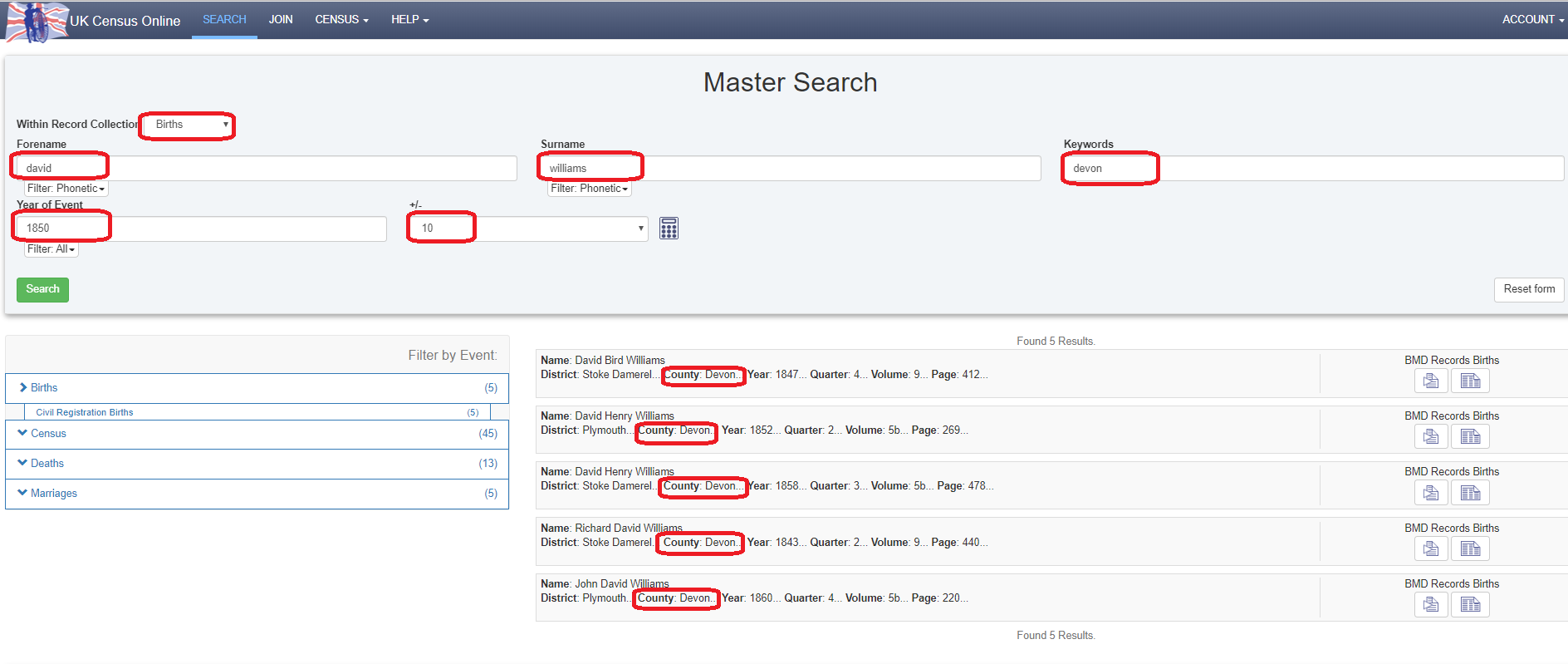BMDS
What are BMDs?
'BMD' stands for Birth, Marriage & Death records kept by the General Register Office (GRO) of England & Wales, part of the National Office of Statistics (ONS). These records have been kept by law since 1837, detailing every birth, marriage and death recorded in England & Wales since that date. These records are used to issue birth, marriage and death certificates. The GRO also holds an index to the records, which can be used to find individual records.
Civil Registration Birth Marriage and Death Records
Civil Registration was introduced in 1837 to record Births, Marriages and Deaths, which had not previously been centrally registered. Like the census, its introduction had much to do with monitoring the growth and age profile of the country's population. (Previously, the only records were the parish records kept by the church.)
The General Registry Office (GRO) was in charge of collecting and collating this data and they created quarterly indexes to Birth, Marriage and Death registrations. Registration certificates are a key resource in family history research.
You cannot view the original register entries but you can purchase copies of the certificates. The GRO indexes are used to locate the references necessary to order certificates.
Commencing with the introduction of Civil Registration in 1837 and running to 2005, the indexes enable us to locate the dates of family events and purchase the certificates necessary to carry out our research. The Birth, Marriage & Death indexes are fully searchable online and you can achieve in a day what may have taken you months or even years previously. The GRO provides online certificate ordering, including PDF options for some events.
What can I see on the BMD Indexes?
Although the certificates themselves provide a wealth of knowledge, the indexes provide very little, just an Event, Name, Year, Quarter and Page number. You may also find the reported age at death, the surname of the spouse (1912 onwards) or a mother's maiden name on later entries after 1912. Records are a little patchy in the early years, especially if you are looking at births because initially registration was voluntary.
Early indexes contain just the name and reference, but extra information was later added to the indexes to help locate the correct individual. The Age at Death was included in the Death indexes from 1866 and from 1912 the surname of the spouse was added to the Marriages and the maiden name of the mother to Births.
The post-1984 BMDs contain re-registration entries, where details have been updated at a later date. There will be a date of re-registration in the original entry, however, there is no indication in the later entry that it is a re-registration so we are unable to highlight it as such.
What information can I see on a Birth Marriage or Death Certificate?
Information on a Full Birth Certificate
This will give you; date and place of birth, full name and maiden surname of the mother, forename(s) and sex of the child, the informant's name, address and relationship to the child, full name and occupation of the father if married to the mother (or if he attended with the mother and signed the registration entry) from 1969, and the place of birth of both parents.
Information on a Marriage Certificate
This will give you; date and place of marriage, marital status of the bride and groom whether by banns, licence or certificate, current address and occupation of the bride and groom, names and ages of the bride and groom, names and occupations of their fathers ('full age' indicates that the person was over 21) and names of witnesses.
Information on a Death Certificate
This will give you; name of the deceased, occupation, or the name and occupation of the husband, if a married or widowed woman date and place of death, name, address and family relationship if any of the informant, age, date and place of birth, usual address and maiden name if a married or widowed woman (but only from 1 April 1969) and cause(s) of death.
Ordering Certificates
Certificates for births, marriages or deaths in England or Wales can be ordered online through the GRO. To order a certificate, simply follow the instructions on the GRO website, supplying the necessary data and a GRO Index reference. The full reference is usually a volume and page reference or an 'entry number' for later records, given with the year, quarter and district. This can be found by viewing the full record detail when searching BMD records online. Events from the last 50 years will require you to supply more information at the application stage.
How to Search the BMDs
You can search the Birth Marriage and Death Indexes by clicking on the ‘Search’ tab along the top, you then just need to click on the drop down menu set to ‘All Records’ next to the ‘Within Record Collection’ and select ‘Births’, ‘Marriages’ or ‘Deaths’ from the drop down menu:

You can then enter the name of the person you are looking for.
In the keyword box you can use additional information to help your search. For example, if you are looking for a Birth you could enter a District or County or Mother's Maiden Name (after 1912). If looking for a marriage you could enter a District or County or Spouse Name (more accurate after 1912).
You can then enter a Year of Event date to search with a +/- Year Range option.

The keyword facility is a really flexible tool and can really help cut the number of potential records to check through.
Sometimes less is more, so if you are entering a few keywords and getting no results perhaps try reducing the number of keywords used.
You will notice there are icons displayed to the right of the results, you can use these to view the Record and the Image.